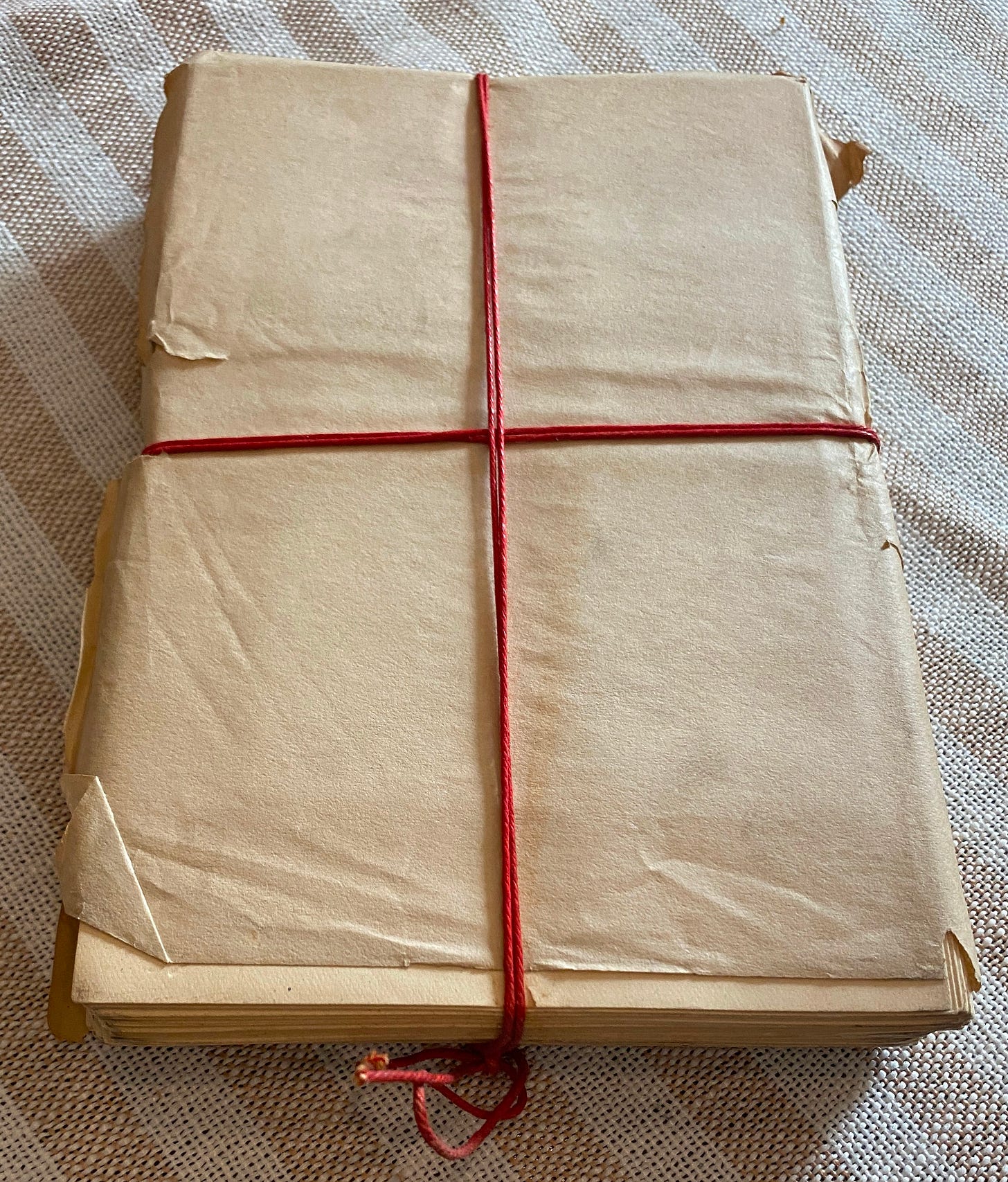This archive is both a scholarly and deeply personal endeavor. The formatting choices you will see throughout this Substack aim to preserve as much of the original writing style as possible, including its quirks, cadences, and period conventions. It is highly recommended that, if possible, you read the original letters and use the transcriptions to help you along.
There is something profoundly meditative and nurturing to take in their thoughts and experiences, slowed by the handwritten scripts of Ebenezer and Agnes. The former was meticulous in his handwriting. He rarely, rarely made a mistake or changed his mind after putting ink to paper, and his script was tighter and more easily read (though not without a deep learning curve and plenty of tricky words to decipher). The latter’s handwriting at times looks like a different alphabet altogether; transcribing Agnes’s letters generally took 2-3 times longer than Ebenezer’s.
A few guiding notes for readers:
Original formatting is retained whenever possible.
Spelling, punctuation, and dialect reflect what is on the original page, which readers are invited to read—even before reading the transcript. Substack can override formatting, such as speciality indentations like Ebenezer and Agnes used. All underlined language in the original letters is italicized here because underlining is not an option on Substack. Ebenezer’s hyphenation, for which he used a dot (not uncommon at the time in Britain and Canada), is represented by an en dash.The double colon (::)
This punctuation was one of Ebenezer’s signatures, a device he used to indicate a split word at the end of a line. The first colon follows the end of the first part of the word, and on the next line the second colon precedes the end of the word. His double colon appears frequently and has been transcribed to combine the colons , thereby making one word.Page Connectors
At the bottom of every page, Ebenezer wrote the first word of the next page to help organize the pages. These repeated words are not indicated within the transcript, but they are in the photographic images of the letters.British Spelling
The letters reflect the language habits of the time, particularly within the context of Ebenezer’s Scottish education and Agnes’s Canadian background.Transcript Gaps
When a word or phrase is indecipherable due to smudging, damage, or handwriting ambiguity, you’ll see double question marks:??. Readers are warmly invited to help decipher these mysteries; these posts will appear in the Notes section and are open to all.On Structure and Discovery
Letters will be posted in roughly chronological groupings, with one partner's correspondence presented for a particular time period, then the other’s (when available). The ordering may not be precise — there are simply too many letters to read ahead, and deciphering them takes considerable time. This means that occasionally, a letter may surface later that logically belongs earlier in the sequence. When that happens, it will be added to the archive with care and context.Research Methods
While all transcription work is done by hand, I occasionally use AI tools to assist with historical references, handwriting ambiguity, or contextual research.
This is a living archive. Transcriptions, images, and commentary may evolve over time as more is understood. Just as Ebenezer wrote, "We shall be the better and truer for every mis::understanding that we have come to understand."
Thank you for reading with curiosity and care.


